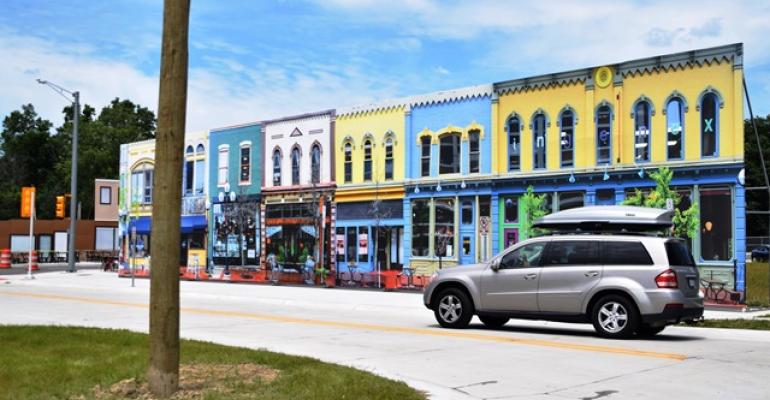From new technologies like electric and autonomous vehicles to new services such as ride and vehicle sharing, the world of personal mobility is evolving in exciting and transformative ways.
A great deal of ink has been spilled covering these emerging issues, and many intelligent and informed people have spent time discussing what new tech and alternative mobility solutions will look like in the coming years. What impact will the rise of the Sharing Economy have on the average consumer’s behavior and bank account? How will the automotive industry be affected? What will we see in our driveways and on our highways in the years ahead?
These are all good questions, but they begin with a much more fundamental question: What do consumers think about all of this, and how do families and individuals see their own lives changing as these innovations move from abstract concept to concrete reality?
That question has not really been fully addressed – until now. The results of a detailed and comprehensive new online survey from market researcher Morpace reveal some fascinating and potentially important information about how the general public views these issues.
The survey is the 2016 MOVE (Mobility Options and Vehicle Engagement) Study, a rigorously scientific survey of more than 4,000 participants in eight of the largest metropolitan markets across the country. Survey respondents were carefully screened to ensure a geographically and demographically representative sample.
Alternative mobility is generally recognized across the industry as the next evolution of modern transportation. Morpace designed the MOVE Study not only to address alternative mobility options, but also ultimately provide industry executives with an assessment of how these new transportation modes will be used – both today and in coming years.
The study aims to understand the practicality of relying less on a personal vehicle and leveraging the specific modes of alternative mobility that are available. MOVE assesses which of these modes are most appealing to consumers, the key advantages they provide, how consumers wish to engage in these services and how they will shape the future of transportation.
MOVE Study participants were asked in-depth questions not only about their vehicular preferences and projections, but also about how they feel about the sharing economy in general, what they currently do for transportation and what they anticipate doing in the future.
One of the most surprising findings, particularly given all the publicity about Uber and other alternative-mobility services, is that those solutions are viewed simply as impractical by many. In fact, only about one-third of respondents indicated these approaches currently work for them. Even for those that do use such solutions, it tends to remain a complementary part of the transportation equation, rather than a true alternative to traditional private vehicle ownership.
Other noteworthy findings include:
- A lack of trust. New technologies and new modalities often result in an initial lack of trust by consumers, and the Sharing Economy is no different. Perhaps unsurprisingly, respondents who are currently engaged in peer-to-peer transactions are also the ones most likely to engage in the future. Overcoming the lack of trust in these technologies and transactions will be critical going forward.
- Ride-sharing services are greater than car-sharing services at least for now. Respondents did indicate this is a trend likely to continue into the future. The flexibility and on-demand nature of ride-sharing services makes them well-suited for their current role: primarily an “as-needed” backup and not a daily transportation option.
- Mobility options that provide a “green” benefit or offer reduced traffic congestion are most appealing to respondents.
- Participants would like to access a single app (from a trusted source) that combines all of the various information from different transportation modes.
(Detailed results from the full study can be found here).
For automotive OEMs and dealerships, this is largely welcome news. There is nothing that indicates vehicle sales are going to decrease as options for alternative mobility slowly proliferate. These services are still viewed and used as mostly complementary, not replacements, and a high percentage of people still plan on buying/leasing in the future.
For dealerships, the good news is that the data seem to indicate they are not in any real danger of losing customers/sales in the short term. In the long run, however, as car-sharing grows in popularity, it might make sense for dealers to get more involved – perhaps through some kind of rental model.
Dealerships have a built-in network for car-sharing/rentals, and they might be able to put that infrastructure to good use. As General Motors has demonstrated by selling its new Bolt electric vehicle primarily to Lyft drivers, usage is the greatest advertising/marketing program you can have. Getting people into cars for a de facto test drive, and exposing them to new technologies, new models and new ideas almost certainly will pay off.
MOVE also reveals autonomous vehicles remain a wild card. Consumers will need to be eased into this new technology, as building trust and familiarity is a gradual process.
Like any transformative technology, it takes time to become widely used and accepted. In fact, even though one-half of respondents in the study expect fully autonomous vehicles to be on the road in the next five years, more respondents would consider purchasing a semiautonomous vehicle over a fully autonomous vehicle.
For an industry on the verge of some truly disruptive and dramatic changes, these types of insights help automotive executives and decision-makers better understand consumer perception of ideas like the sharing economy.
It also helps them better prepare their marketing efforts for concepts like autonomous vehicles, knowing there is an uphill battle with consumers on that front. As these dynamic industry shifts come to fruition, automotive executives and consumers can work together to ensure mutual success.
Bryan Krulikowski serves as senior vice president of Morpace, a full-service market research and consulting organization focused on the automotive, healthcare, financial services, retail, consumer goods and technology industries.





